How Much Does Commercial Painting Cost?
The cost of commercial painting can vary significantly depending on several factors, including the size of the building, the type of surfaces being painted, the quality of paint used, and the complexity of the project. On average, commercial painting costs range from $2 to $8 per square foot. For a standard commercial building, this could result in a total cost ranging from $20,000 to $80,000 for a 10,000-square-foot space. Factors such as surface preparation, the number of coats required, and any necessary repairs or priming can also influence the final price. Additionally, specialty finishes, detailed work, or painting in difficult-to-access areas may increase labor costs.

Investing in high-quality paint and professional services ensures a long-lasting finish, enhancing the building’s appearance and protecting it from environmental elements. Proper planning and accurate cost estimation are essential to managing the budget effectively and achieving the desired results.
Factors Influencing Commercial Painting Costs
Several factors influence the cost of commercial painting, each playing a crucial role in determining the project’s overall budget. Understanding these factors is essential for accurate budgeting and successful project execution, allowing property owners to allocate resources efficiently and achieve optimal results:
Size of the Property
The size of the area to be painted is the most significant cost driver. Larger properties require more paint, materials, and labor, increasing the overall cost. Accurately measuring the square footage of the surfaces to be painted is critical for developing a realistic budget and avoiding unexpected expenses. Additionally, larger projects may require specialized equipment, such as lifts or scaffolding, to reach high or difficult areas, further impacting costs. Planning for these logistical requirements in advance can help streamline the painting process and prevent delays, ensuring the project is completed on time and within budget.
Property Size | Estimated Cost per Sq Ft | Total Estimated Cost (10,000 sq ft) |
Small (5,000 sq ft) | $1.95 – $5.85 | $9,750 – $29,250 |
Medium (10,000 sq ft) | $2.34 – $6.24 | $23,400 – $62,400 |
Large (20,000 sq ft) | $2.73 – $6.83 | $54,600 – $136,600 |
Type of Paint and Materials
The quality and type of paint used can significantly impact the cost. Higher-quality paints offer better durability, coverage, and resistance to wear and tear, but they come at a higher price. Choosing the right type of paint for the specific surfaces and environmental conditions is essential to ensure longevity and performance. For example, high-traffic areas may benefit from more durable, scuff-resistant paints, while exterior surfaces require paints that can withstand harsh weather conditions. Investing in high-quality materials can lead to long-term savings by reducing maintenance needs and extending the lifespan of the paint job. Property owners should consult with painting professionals to select the most appropriate products for their specific needs and objectives.
Paint Type | Cost per Gallon |
Standard Latex | $42 – $84 |
Premium Latex | $105 – $147 |
Acrylic Paint | $63 – $126 |
Oil-Based Paint | $84 – $183 |
Surface Preparation
Proper surface preparation is crucial for a high-quality finish and long-lasting results. This may include cleaning, sanding, repairing, and priming surfaces, which can add to the overall cost. Addressing any existing damage or imperfections before painting is essential to ensure a smooth and even finish. Preparation tasks such as patching holes, sealing cracks, and removing old paint can be labor-intensive but are necessary for achieving optimal adhesion and durability. Neglecting surface preparation can lead to issues such as peeling, chipping, or uneven coverage, resulting in the need for costly repairs and repainting.
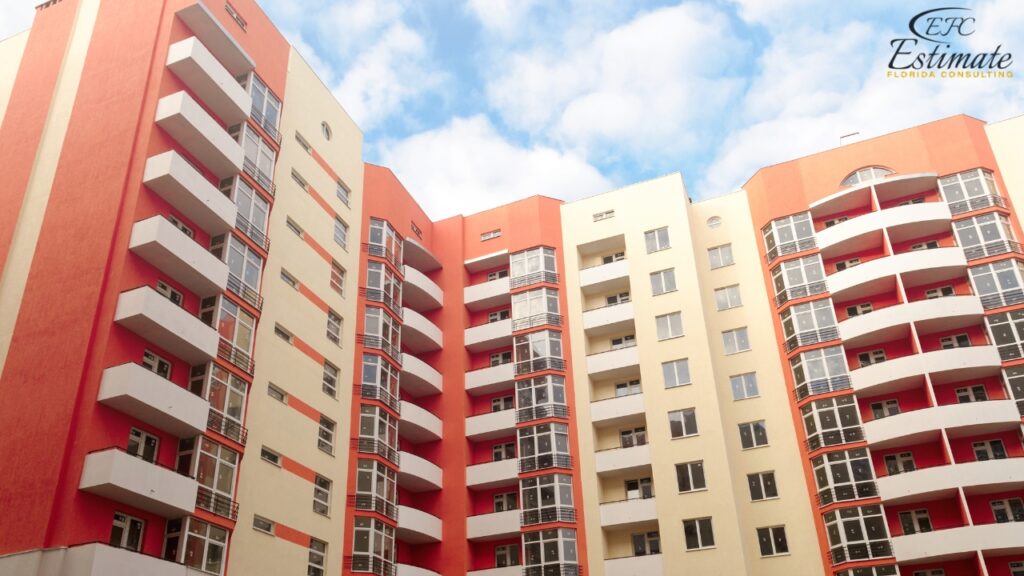
Investing in thorough surface preparation can prevent future problems and enhance the overall quality of the paint job, protecting the property from wear and environmental damage.
Preparation Task | Estimated Cost Range |
Cleaning and Sanding | $273 – $819 |
Repairs and Patching | $819 – $2,730 |
Priming | $546 – $1,638 |
Complexity of the Project
The complexity of the painting project can also influence the cost. Properties with intricate designs, multiple colors, and detailed trim work require more time and expertise, leading to higher costs. Specialized techniques, such as faux finishes or murals, may also add to the complexity and expense of the project. Additionally, projects that involve painting areas with high ceilings, awkward angles, or challenging access points may require additional equipment and labor, further increasing costs. Collaborating with experienced painters who can navigate these complexities efficiently can help ensure a successful outcome. Property owners should discuss the specific challenges of their project with contractors to develop a comprehensive plan that addresses all aspects of the job, from design to execution.
Labor Costs
Labor costs vary based on the region, the complexity of the project, and the experience level of the painters. Professional painters with specialized skills for commercial properties typically charge more. Labor costs are often one of the largest components of a painting project’s budget, making it important to select qualified professionals who can deliver high-quality results on time. Hiring skilled painters can also reduce the likelihood of errors or delays, minimizing the need for costly rework or touch-ups. Establishing clear expectations and communication with the painting crew can help ensure a smooth and efficient project execution. Property owners should obtain multiple quotes from reputable contractors to ensure they are receiving competitive pricing and quality service.
Labor Task | Estimated Cost per Hour |
General Labor | $39 – $78 |
Skilled Labor | $58.50 – $117 |
90% More Chances to Win Projects With Our Estimate!
- Multi-Family Building
- Hotel Building
- Hospital Building
- Warehouse Building
- School & University Building
- High-Rise Building
- Shopping Complex
- Data Center Building
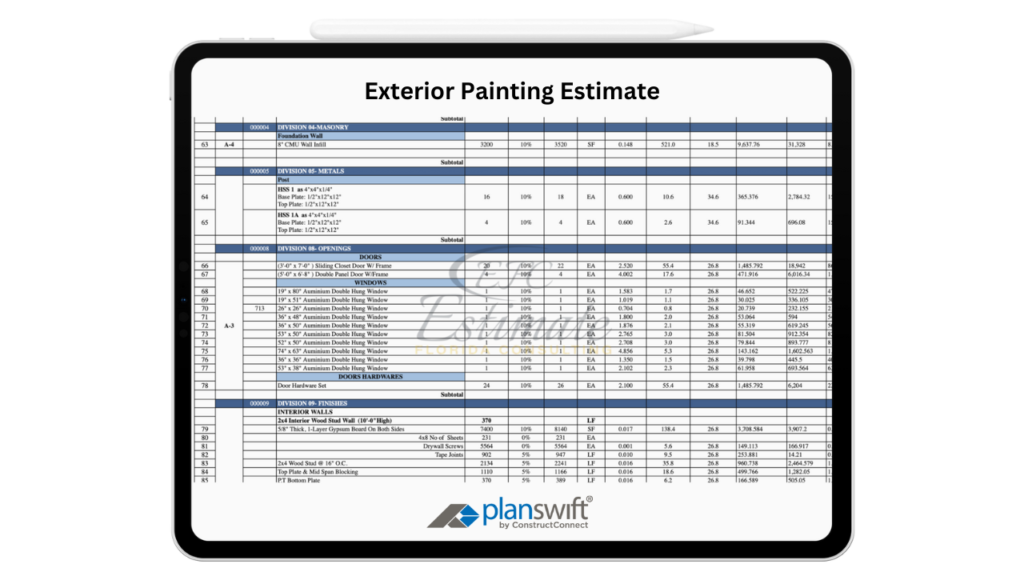
Breakdown of Commercial Painting Costs
Here’s a detailed look at the primary components of commercial painting costs, allowing property owners to better understand and manage their budgets:
Surface Preparation
Proper preparation is essential for ensuring a smooth and durable finish. This includes cleaning surfaces, repairing any damage, and applying primer. Thorough surface preparation not only enhances the appearance of the final paint job but also extends its lifespan by promoting better adhesion and resistance to wear. Property owners should work closely with their painting contractors to assess the condition of surfaces and determine the appropriate level of preparation required. By investing in quality preparation, property owners can avoid premature deterioration and costly repairs, ensuring a long-lasting and attractive finish.
Cost Component | Estimated Cost Range |
Cleaning and Sanding | $273 – $819 |
Repairs and Patching | $819 – $2,730 |
Priming | $546 – $1,638 |
Paint and Materials
The type and amount of paint required depend on the size of the property and the quality of the paint chosen. Selecting paints that are specifically designed for commercial applications can provide added durability and protection against environmental factors. High-quality paints offer better coverage and color retention, reducing the need for multiple coats and frequent touch-ups. Property owners should consider the long-term benefits of investing in superior materials, as they can enhance the overall value and aesthetic appeal of the property. By choosing paints that are resistant to fading, moisture, and wear, property owners can ensure a lasting and vibrant finish that withstands the demands of a commercial environment.
Cost Component | Estimated Cost Range |
Paint (Standard) | $42 – $84 per gallon |
Paint (Premium) | $105 – $147 per gallon |
Supplies (brushes, rollers, etc.) | $273 – $819 |
Labor Costs
Labor is one of the most significant components of the overall cost. The total labor cost will depend on the project’s size, complexity, and the painters’ hourly rates. Hiring experienced painters who understand the specific needs of commercial projects can ensure that the work is completed efficiently and to a high standard. Property owners should obtain multiple quotes and assess the qualifications of potential contractors to ensure they are hiring a team that can deliver the desired results. Clear communication and detailed contracts can help set expectations and avoid misunderstandings during the project.
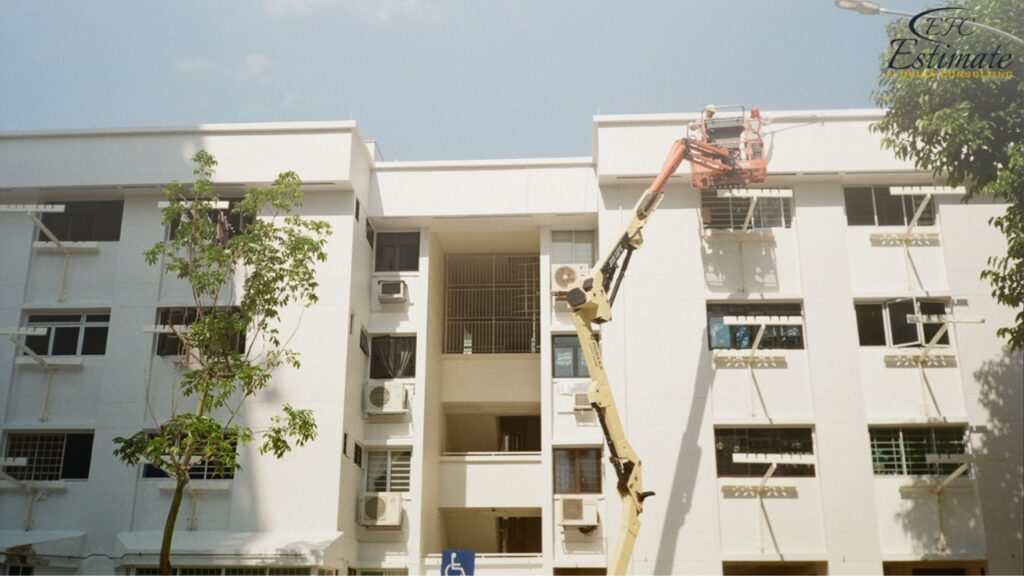
By partnering with skilled professionals, property owners can achieve a flawless and durable finish that enhances the property’s appearance and functionality.
Cost Component | Estimated Cost Range |
General Labor | $39 – $78 per hour |
Skilled Labor | $58.50 – $117 per hour |
Additional Services
Depending on the project, additional services such as scaffolding, high-rise equipment, and safety measures may be required, adding to the overall cost. Painting tall or complex structures may necessitate specialized equipment and safety precautions to ensure the work is completed safely and effectively. These additional considerations can significantly impact the project’s timeline and budget, so it’s important for property owners to discuss these needs with their painting contractors upfront. By planning for these factors, property owners can avoid unexpected costs and ensure a smooth project execution. Comprehensive safety plans and the use of proper equipment can also prevent accidents and ensure compliance with safety regulations.
Cost Component | Estimated Cost Range |
Scaffolding | $1,183 – $3,549 per day |
High-Rise Equipment | $2,730 – $8,190 per day |
Interior vs. Exterior Commercial Painting Costs
The cost of painting the interior versus the exterior of a commercial property can vary significantly due to different requirements and challenges. Understanding these distinctions can help property owners make informed decisions about their painting projects:
Interior Painting Costs
Interior painting typically involves more detailed work, such as painting trim, doors, and intricate designs. However, it may require less preparation than exterior painting. Interior environments are generally more controlled, reducing the impact of weather conditions on the painting process. However, considerations such as air quality, ventilation, and scheduling around business operations can affect the overall cost and timeline. Property owners should collaborate with their painting contractors to develop a plan that minimizes disruptions and ensures a high-quality finish. By addressing these factors, property owners can create a welcoming and aesthetically pleasing interior that enhances the customer and employee experience.
Area | Estimated Cost Range |
Walls | $1.95 – $3.38 per sq ft |
Ceilings | $2.73 – $4.95 per sq ft |
Trim and Doors | $2.03 – $5.41 per linear ft |
Exterior Painting Costs
Exterior painting often involves more extensive preparation, including power washing, repairing damaged surfaces, and dealing with weather conditions. The choice of paint for exterior projects is crucial, as it must withstand exposure to the elements, including UV rays, rain, and temperature fluctuations. Additionally, exterior painting may require specialized equipment and safety measures to access hard-to-reach areas safely. Property owners should work with experienced contractors who understand the complexities of exterior painting and can provide expert advice on the best materials and techniques for achieving a durable and attractive finish. Proper planning and execution of exterior painting projects can enhance curb appeal, protect the building from environmental damage, and increase the property’s value.
Area | Estimated Cost Range |
Walls | $2.73 – $6.83 per sq ft |
Trim and Fascia | $3.90 – $6.76 per linear ft |
Doors and Windows | $2.03 – $5.41 per unit |
Download Template For Painting Project Breakdown
- Materials list updated to the zip code
- Fast delivery
- Data base of general contractors and sub-contractors
- Local estimators

Ongoing Maintenance and Repainting Costs
Regular maintenance and repainting are essential to keep a commercial property looking its best and protecting it from the elements. This includes periodic inspections, touch-ups, and complete repaints as needed. By implementing a proactive maintenance strategy, property owners can extend the life of their paint job and preserve the building’s appearance and structural integrity.
Regular Inspections and Touch-Ups
Regular inspections can help identify areas that need touch-ups or repairs before they become major issues. This proactive approach can save money in the long run by extending the life of the paint job. During inspections, property owners should look for signs of wear, such as fading, chipping, or peeling, and address these issues promptly to prevent further deterioration.
Maintenance Task | Estimated Cost Range |
Inspections | $236 – $819 per visit |
Touch-Ups | $473 – $1,638 per visit |
Repainting Schedule
The frequency of repainting depends on the type of paint used, the quality of the original job, and the property’s exposure to weather and wear. Generally, commercial properties should be repainted every 5-10 years to maintain their appearance and protection. Repainting not only refreshes the property’s look but also provides an opportunity to address any underlying issues and update the color scheme to reflect current branding or design trends.
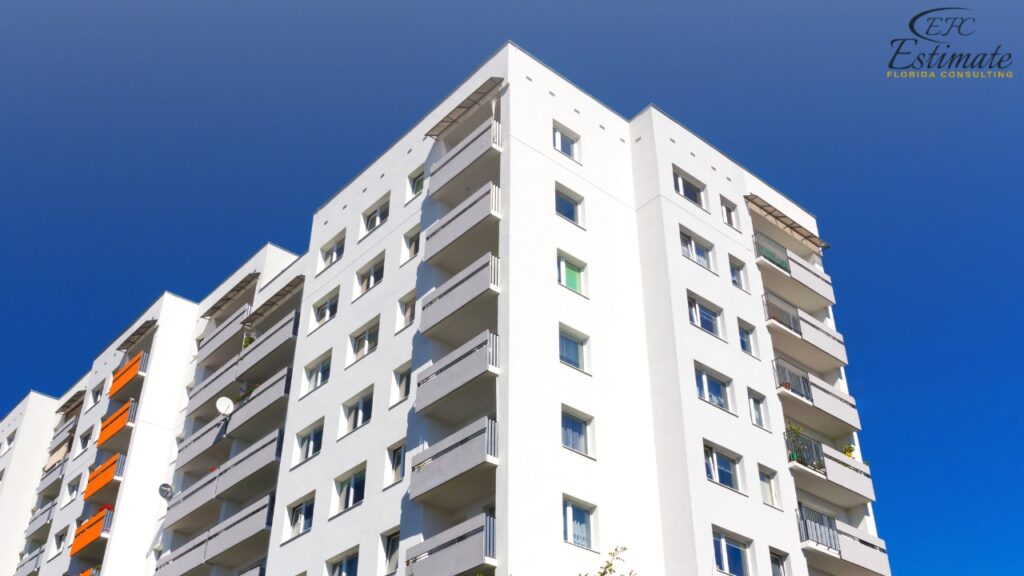
Repainting Task | Estimated Cost Range |
Complete Repaint (Interior) | $2.03 – $5.41 per sq ft |
Complete Repaint (Exterior) | $2.73 – $6.83 per sq ft |
Cost-Saving Tips for Commercial Painting
While commercial painting can be a significant expense, there are ways to manage costs without compromising on quality. By implementing these strategies, property owners can achieve a high-quality finish that aligns with their budgetary constraints:
- Plan Ahead: Planning your painting project during off-peak seasons can often result in lower costs and quicker availability of painters. Contractors may offer discounts during slower periods to keep their schedules full. By booking services in advance, property owners can secure competitive rates and ensure that their project is completed on time.
- Choose the Right Paint: Investing in high-quality paint may have a higher upfront cost but can save money in the long run by reducing the need for frequent repainting and touch-ups. High-quality paints offer better coverage, durability, and resistance to wear and tear. Property owners should work with their painting contractors to select paints that are specifically formulated for the property’s unique needs and environmental conditions.
- Regular Maintenance: Regular maintenance and touch-ups can extend the life of your paint job and prevent costly repairs. By addressing minor issues promptly, you can avoid more extensive and expensive repairs down the line. Implementing a routine maintenance schedule can also help property owners identify and address potential problems before they escalate, ensuring the longevity and effectiveness of the paint job.
- Get Multiple Quotes: Obtain quotes from several painting contractors to ensure you are getting a fair price. Comparing quotes can help you understand the market rate and make an informed decision. When reviewing quotes, property owners should consider the contractors’ experience, reputation, and the quality of materials they use to ensure they are selecting the best option for their project.
Long-Term Benefits of Professional Commercial Painting
While the upfront costs of a commercial painting project may seem high, it’s important to consider the long-term benefits. A high-quality paint job can:
Get Acquainted with Commercial Painting
Boost Curb Appeal
A fresh coat of paint can significantly enhance the curb appeal of any commercial building, creating a strong first impression on customers, tenants, and clients. The exterior of your building is often the first thing people notice, and a clean, modern, and well-maintained appearance reflects positively on your business. Whether it’s a retail store, office complex, or industrial facility, a fresh paint job can instantly revitalize the look of the property, giving it a more professional and inviting appearance. This is especially important for businesses that rely on foot traffic, as an attractive exterior can draw in potential customers. A dull, faded, or peeling façade may give off the impression of neglect, while a vibrant, fresh look suggests that the business is well cared for and trustworthy. The right color choice and a professional finish can also emphasize your brand identity, helping your building stand out from the competition and making it a landmark in the community.
Increase Property Value
Regularly maintaining both the interior and exterior of a commercial building through painting can have a significant impact on its market value. For property owners and investors, a well-maintained property is more attractive to potential buyers and tenants, leading to higher demand and, ultimately, a higher selling price or rental rate. A new coat of paint not only improves the building’s appearance but also signals that the property has been well cared for, reducing concerns about hidden damages or the need for expensive repairs. Buyers and tenants often equate a fresh, clean look with fewer immediate maintenance needs, making the property more appealing. Additionally, repainting can provide an opportunity to modernize the building’s appearance, aligning it with current design trends and making it more desirable in the market. Overall, investing in regular painting and maintenance helps preserve the value of your property while potentially increasing its appreciation over time.
Enhance Durability
High-performance paints offer more than just aesthetic benefits; they are specifically designed to enhance the durability of the surfaces they cover. Commercial buildings are exposed to various elements, including weather, foot traffic, and operational wear and tear, all of which can cause damage over time. High-quality, durable paints provide a protective layer that can safeguard your building’s surfaces from moisture, mold, UV radiation, and physical impacts. For exterior surfaces, paints with weather-resistant properties are crucial, especially in regions with harsh climates. For example, elastomeric coatings can expand and contract with temperature fluctuations, preventing cracking and peeling. Additionally, moisture-resistant paints are ideal for areas prone to rain or high humidity, as they help prevent water infiltration and mold growth. Inside the building, durable paints can withstand frequent cleaning, scuffs, and high traffic, making them ideal for spaces like hallways, lobbies, and offices. By choosing high-performance paint, you not only extend the life of your building’s surfaces but also reduce the frequency and cost of future maintenance.
Improve Energy Efficiency
Certain types of paint can contribute to energy efficiency, helping reduce heating and cooling costs over time. Reflective or cool roof paints are designed to reflect more sunlight and absorb less heat, which can significantly lower the temperature inside a building. This is particularly beneficial for commercial properties in hot climates where cooling costs can be a significant expense. By reducing the heat absorbed by the building’s exterior, these paints help to keep the interior cooler, thus reducing the need for air conditioning and lowering energy bills. Similarly, some exterior paints have insulating properties that can help retain heat during colder months, reducing heating costs. These energy-efficient paints not only provide cost savings but also contribute to a more sustainable and environmentally friendly building, which can be a selling point for tenants or clients who value green practices. Incorporating energy-efficient paint into your commercial building can result in both immediate savings and long-term benefits for the environment and your bottom line.
Eco-Friendly Options for Commercial Painting
As sustainability becomes more of a priority for businesses, many commercial painting projects now incorporate eco-friendly practices. Green building initiatives and environmental regulations encourage the use of low-VOC (volatile organic compounds) and non-toxic paints that minimize harmful emissions. These paints are not only safer for the environment but also for the occupants of the building, as they reduce indoor air pollution and improve overall air quality.
Advantages of using eco-friendly paints:
- Improved Air Quality: Low-VOC and no-VOC paints emit fewer toxic fumes, making them ideal for schools, hospitals, or office buildings where air quality is crucial for health and comfort.
- Compliance with Green Certifications: Many commercial properties aim for LEED (Leadership in Energy and Environmental Design) certification, which requires the use of sustainable building materials, including eco-friendly paints.
- Longevity and Durability: Many environmentally friendly paints are highly durable, meaning they won’t need to be reapplied as frequently, reducing long-term maintenance costs.
Choosing eco-friendly options for your commercial painting project is not only a responsible business decision but also one that aligns with long-term cost savings and environmental stewardship.
How Often Should a Commercial Building Be Painted?
The frequency of repainting a commercial building depends on several factors, including the type of paint used, the building’s location, and the amount of traffic the property endures. While interior spaces may require repainting every 5-7 years due to scuff marks, wear-and-tear, or updates to branding, exterior paint typically lasts between 7-10 years but may need to be refreshed sooner in harsh climates.
Signs that it’s time to repaint include:
- Fading Colors: UV exposure can cause exterior paint to fade, especially in sun-drenched areas. This not only affects the aesthetic appeal but can also signal that the paint is losing its protective qualities.
- Chipping or Peeling Paint: When paint starts to chip or peel, it exposes the underlying material to the elements, leading to potential structural damage.
- Cracks or Bubbling: These issues indicate moisture or improper adhesion, which means the current paint layer is compromised and needs to be addressed.
- Stains or Mildew Growth: If you notice mold, mildew, or rust stains, particularly on exterior walls, it’s likely time to repaint with materials designed to prevent moisture penetration.
By scheduling regular repainting or touch-ups, you can preserve the structural integrity and appearance of your building, protecting it from costly repairs in the future.
The Role of Safety in Commercial Painting Projects
Safety is a paramount concern during any commercial painting project, particularly in buildings with complex layouts, multiple stories, or high-traffic areas. Proper safety protocols help protect both workers and the people using the building. Many commercial painting contractors are trained in OSHA (Occupational Safety and Health Administration) regulations to ensure compliance with national safety standards.
Key safety considerations include:
- Fall Protection: For high-rise or multi-story buildings, painters use scaffolding, lifts, or harnesses to safely access hard-to-reach areas.
- Hazardous Material Handling: Some older buildings may have lead paint or asbestos, which requires specialized handling and disposal by certified professionals to prevent health risks.
- Minimizing Disruption: In operational commercial spaces like offices, hotels, or retail stores, painters often schedule work during non-business hours or use containment strategies to ensure that painting does not disrupt normal business activities.
Hiring a painting contractor that prioritizes safety ensures that the project is completed without incident, minimizing liabilities for the property owner and keeping the project timeline on track.
Get 5 New Leads Next 7Days With Our System
- Multi-Family Building
- Hotel Building
- Hospital Building
- Warehouse Building
- High-Rise Building
- Shopping Complex
Conclusion
Painting a commercial property is a substantial investment that requires careful planning and budgeting. By understanding the factors that influence costs and considering both immediate and long-term expenses, property owners can make informed decisions and achieve a high-quality, durable finish. Proper maintenance and choosing the right materials and contractors can enhance the value and appearance of your commercial property, providing a positive return on investment. By prioritizing quality and attention to detail, property owners can create an inviting and professional environment that supports their business goals and enhances the overall customer experience.
FAQs
The average cost of commercial painting ranges from $2 to $8 per square foot, depending on various factors such as the size of the building, type of surfaces, quality of paint, and complexity of the project.
For a 10,000-square-foot commercial building, the total cost can range from $20,000 to $80,000. This estimate includes surface preparation, painting, and any necessary repairs or priming.
Several factors influence commercial painting costs, including:
- Size of the property
- Type of paint and materials used
- Surface preparation requirements
- Complexity of the project
- Labor costs
Larger properties require more paint, materials, and labor, which increases the overall cost. Specialized equipment, such as lifts or scaffolding, may also be needed for larger projects, impacting costs.
- Small (5,000 sq ft): $9,750 – $29,250
- Medium (10,000 sq ft): $23,400 – $62,400
- Large (20,000 sq ft): $54,600 – $136,600
Higher-quality paints offer better durability and coverage but come at a higher price. The type of paint needed depends on the surfaces and environmental conditions, impacting the overall cost.
- Standard Latex: $42 – $84 per gallon
- Premium Latex: $105 – $147 per gallon
- Acrylic Paint: $63 – $126 per gallon
- Oil-Based Paint: $84 – $183 per gallon
Proper surface preparation, including cleaning, sanding, repairing, and priming, ensures a high-quality finish and longevity. This can add to the overall cost but prevents future issues like peeling or uneven coverage.
- Cleaning and Sanding: $273 – $819
- Repairs and Patching: $819 – $2,730
- Priming: $546 – $1,638
Complex projects with intricate designs, multiple colors, and detailed trim work require more time and expertise, leading to higher costs. Projects involving high ceilings or challenging access points also add to the complexity and expense.
Google Reviews

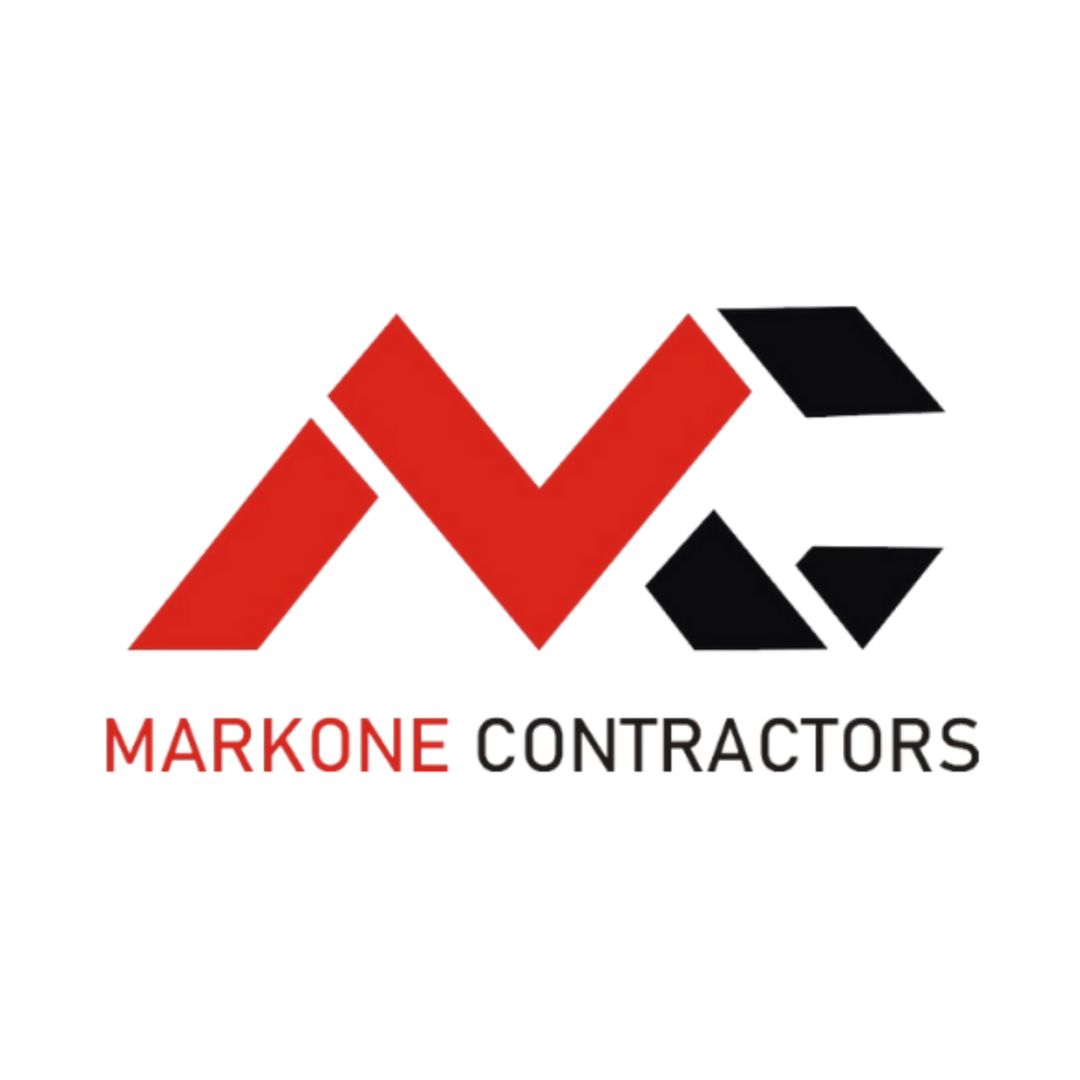

Process To Get Commercial Painting Estimate Report
Here I am going to share some steps to get a commercial painting estimate report.
-
You need to send your plan to us.
You can send us your plan on info@estimatorflorida.com
-
You receive a quote for your project.
Before starting your project, we send you a quote for your service. That quote will have detailed information about your project. Here you will get information about the size, difficulty, complexity and bid date when determining pricing.
-
Get Estimate Report
Our team will takeoff and estimate your project. When we deliver you’ll receive a PDF and an Excel file of your estimate. We can also offer construction lead generation services for the jobs you’d like to pursue further.

